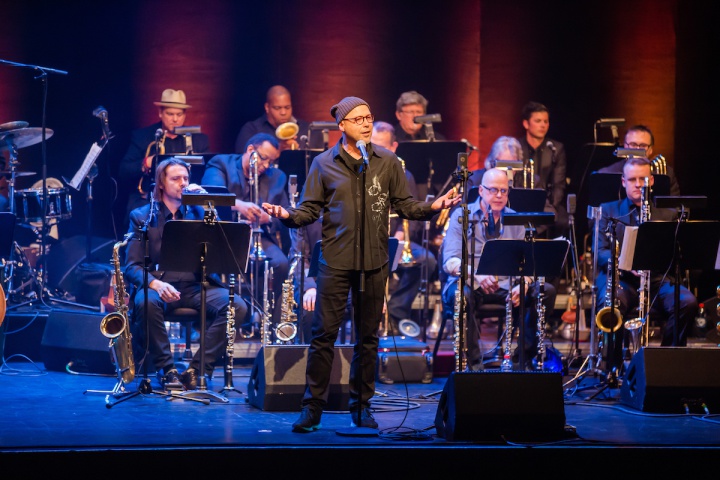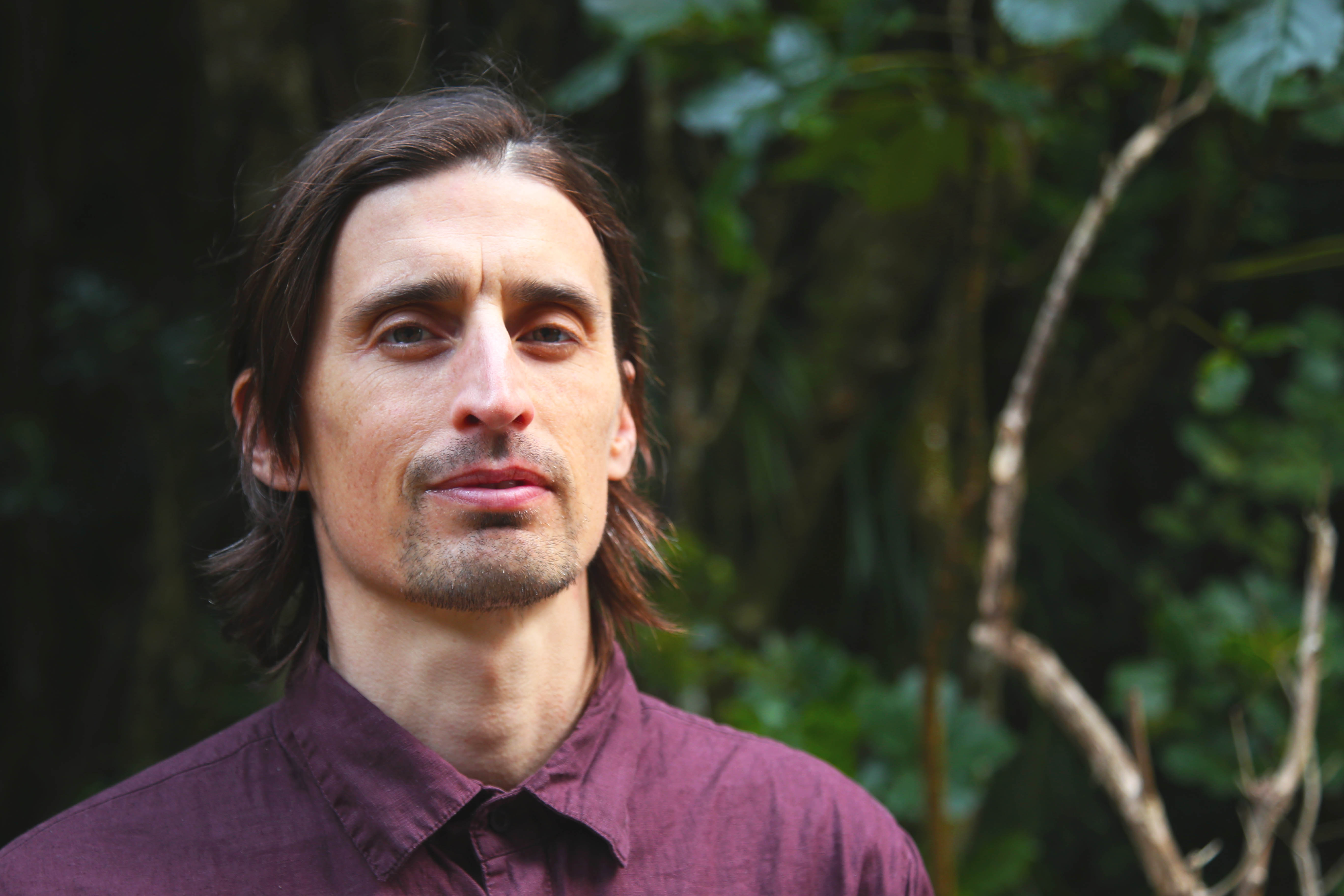
The performance by John Beasley’s Monk’estra, playing the music of Thelonious Monk, at the Wellington Jazz Fest was a truly remarkable and transcendent experience and the highlight of the festival for me.
Pianist and Composer Thelonious Monk (2017-1982) from Rocky Mount, Carolina is aptly described by Candace Allen in the Guardian as “Perhaps the most enigmatic talent to have emerged from the maelstrom of bebop in the 1940s.”
It seems, however that like so many tortured geniuses, Thelonious Monk was under appreciated in his time and suffered for much of his life. It seems Monk simply couldn’t abandon his clear and unique musical vision to conform to the musical conventions of the day. Despite being capable of matching anyone for speed, Monk insisted on playing in a distinctly ‘slow and angular style’, emphasising the silence between notes and bending notes with subtle variations of pressure in his long splayed fingers. He also had a surreal compositional style with sudden jarring chord changes and repetitive explorations of themes, innovations that not many others were exploring at the time. However the style at the time was for fast bebop jazz and Monk refused to go with the flow but rather persisted with his avant-garde approach. He also apparently was unable to adapt to the conventions of the job, such as gigging with other musicians or session recording and as a result spent most of his professional life struggling to support his family.
Allen writes that Monk was “wearied beyond his considerable limits by a misdiagnosed and ignorantly medicated bipolar condition, ceaseless financial woes, his recording company’s unrelenting demands and the deaths of too many friends”. As a result in 1975, he embraced “the comforting mysteries of permanent silence” living with his friend and patron Baroness Nica (Pannonica) de Koenigswarter until his death in ‘82.
His compositions and performances no doubt did seem random and surreal with their sudden chord changes, inelegant percussive and splayed-finger manner of striking the keyboard and his legs flapping around like they had a life of their own. However, this belies the truth that Monk had a clear creative vision and knew exactly what he was doing. It also shows that he was far ahead of his time, as this more reflective and surreal approach to jazz became popular only later in the piece. Allen writes that even longtime collaborator Miles Davis asked “why Monk persisted with the weird chord changes that just sounded wrong.”
But to Monk, it seems, these chords and surreal tangents or explorations weren’t weird at all. They were the fruit of countless hours of musical exploration and a dedication to understanding the nature of relationships between chords and musical ideas from every angle. As John Fordham writes, also in the Guardian, Monk was drawing from a deep pool of African American musical tradition.
“Monk’s improvisations were not graceful or conventionally virtuosic, but they were gems of concision and unexpected phrasing. In their jagged shapes and jarring dissonances, they sometimes sounded more like avant-garde classical music than jazz, but the impression was misleading – Monk’s music was rooted in African-American forms and the variations took wing only from his wayward imagination.
His compositions echoed early-jazz piano styles that looked back to ragtime, hymnal harmonies (he was a church pianist early on) or were peppered with zigzagging bebop themes that resolved in startled, dissonant hoots.”
A Celebration of Monk’s life
It is only now 100 years after his birth that his music is really gaining the recognition it deserves. In his centenary last year. In 2017, however, The London Jazz Festival dedicated two full days to Monk and his music, New York’s Lincoln Center held a Monkathon – a nine-day multi-artist recital of all his compositions, and the Thelonious Monk Institute of Jazz hosted a special edition of its world-famous jazz competition for rising stars.
John Beasly has played no small part in ensuring the spirit of Monk’s music lives on. The GRAMMY and Emmy-nominated recording artist leads this 18 piece big band project dedicated to keeping the spirit of Monk’s music and creative vision alive. As Beasley said to the packed Opera House audience, “as you can see his music is alive and well and evolving like all great music does.”
There is profound truth in this statement, this was certainly no dead museum piece showcase or tribute big band playing dusty old cover tunes. Rather this orchestra was paying homage to a singular and underappreciated musical genius and the musical lifeblood that flowed through him. The achieved this by taking the music where Monk perhaps would have himself, had he been given the opportunities and support he deserved in his time on earth. Beasley pointed out to the Wellington audience that Monk’s music is very ‘Pliable’ and like Bach you can play it in any tempo and it sounds absolutely amazing. As Beasley describes on his website:
“The feel and sound of MONK’estra captures the spirit of Thelonious Monk’s singular style with its off-beat melodies, humor, strange beauty and unbounded swing in fresh arrangements flavored with hints of New Orleans, hip-hop, Afro-Cuban, contemporary and atmospheric rhythms and colors.”
Beasley also talked to the Wellington audience about the fact that this band has a very strong social message behind it. Unfortunately growing up the South and performing in segregation era USA, Monk had a really tough time with racism and lack of equal opportunity. White music critics, also simply didn’t get what he was trying to do and he was heavily criticised. As Allen writes:
“Some of that mystery was down to the superficial reactions of white critics and audiences disconcerted by a taciturn black man whose erect posture made him appear taller than his already considerable height, and who saw no reason to verbally explain what he felt his music declared...Fans and recording companies alike wanted a continuing cascade of new music – also part of a successful musician’s “job”, while Monk, in the manner of Cézanne, with his ceaseless studies of Mont St Victoire, or a cellist constantly revisiting Bach’s suites, sought new ways of revisiting groupings of notes he’d already ordered, knowing their possibilities to be infinite.”
However as Beasley said, the message of the band and of Monk’s life is “That many flowers bloom in dark times” He believes it is important to remember that lesson today, given many people particularly in the USA are experiencing similarly dark times.
Monk was in fact a man of singular integrity, both musically and in character. He was a dedicated family man and never rolled on friends, even when it meant personal sacrifice such as losing his liquor license and livelihood. Monk never sold out and kept his faith in his unique creative vision and approach to the music, although he could have achieved fame and financial success had he done so. He remained true to his inner musical instincts through his life - even when this meant silence when he retreated like a monk to silence for the latter portion of his life. His decision is vindicated today as he is revered as one of the greats, and has inspired some of the greatest musicians alive today to take the art form in new directions.
Personally, I feel a strong spiritual, ecstatic and at times even psychedelic or shamanistic thread running through Monk’s music and this is also present the way he lived his life. He had a habit of dancing across stage in a seemingly possessed, staggering fashion during fellow musicians solos, looking much like a Griot in the West African tradition. Markell Allen writes here of the influence of the West African griot in early American music. The Griot was a musician with both social message and the musical ability of uplifting fellow humans to higher planes. Monk was continuing this direct lineage of Afro American spiritual music, transplanted through slavery, blues and had this ability in spades - his music carries you away through the clouds and into the deepest recesses of your mind and soul.
The show
While Beasley could never hope to match Monk’s piano chops for pure skill, he used his mouth melodica, electric synthesizer organ and even sampling to good effect to match and even accentuate this swing and bend of Monk, and take the music to new places.
This show is the logical extension of the experimentation Monk was performing and takes advantage of new technology and approaches to create a truly ethereal feel and a sound that Monk likely never heard the likes of except for, perhaps in his own head.
The pieces were often a combination of spartan, traditional Monk piano solos emphasising the silence in between notes, and a more big band sound with electric organs and horns in full effect. As Fordham puts it:
“Beasley approach is to thread Monk’s famous and lesser-known tunes into new orchestral settings while leaving Monk’s tightly edited original themes strictly alone. He changes the harmonies and the instrumental textures as if holding them up to constantly changing angles of light, stretching the rhythms with hip-hop beats and funk, presenting the results in more audience-friendly ways than Monk would ever have done.”
The rest of the band was awesome, featuring a solid Drums and Double Bass core and a huge line-up of horns, featuring four a piece of Sax, Trombones and Trumpets. Beasley brought his own Baritone and Tenor Sax players who played some remarkable solos, as did his lead and second trumpet player and trombonist. Rodger Fox and a few of his band had the privilege of joining in the fun. This provided some hilarious moments when Beasley attempted to introduce the band. He asked one of the Kiwis in the front row and clearly struggled with the Kiwi accent calling him ‘Bin Bick’. However, Beasley was the perennial showman, totally at ease with a laid back New Orleans brand of cool and related to the audience well.
Advances in bipolar treatment
Incidentally recent evidence suggests psilocybin (the active component of magic mushrooms) helps with mental illnesses including bipolar disorders. Dr. David E. Nichols, psychedelic research expert and co-founder of The Heffter Research Institute, explains in Psychology Today:
“We have been able to accomplish so much in such a relatively short time. Psilocybin, the psychoactive compound in magic mushrooms, is proving a prodigious treatment for anxiety, depression, addiction, and one study even found it might lead to neurogenesis, or the regrowth of brain cells.”
While watching this show I couldn’t help but imagine where his music could have gone, had Monk had been prescribed this natural and creativity enhancing substance rather than dulled into oblivion by ineffective and harmful pharmaceutical drugs. Staring at the cloud-like and pulsating light patterns of the excellent light show, I also felt the Monk was out there somewhere in the silence of the other dimensions watching all this and listening with an approving smile on his face and dancing his funky dance.
Finally, one New Zealand musician who was clearly influenced by Monk was the highly acclaimed jazz pianist Marc De Clive-Lowe. Here is his homage to Monk, Melodious Funk:



 Keith Rankin: Make Deficits Great Again - Maintaining A Pragmatic Balance
Keith Rankin: Make Deficits Great Again - Maintaining A Pragmatic Balance Richard S. Ehrlich: China's Great Wall & Egypt's Pyramids
Richard S. Ehrlich: China's Great Wall & Egypt's Pyramids Gordon Campbell: On Surviving Trump’s Trip To La La Land
Gordon Campbell: On Surviving Trump’s Trip To La La Land Ramzy Baroud: Famine In Gaza - Will We Continue To Watch As Gaza Starves To Death?
Ramzy Baroud: Famine In Gaza - Will We Continue To Watch As Gaza Starves To Death? Peter Dunne: Dunne's Weekly - A Government Backbencher's Lot Not Always A Happy One
Peter Dunne: Dunne's Weekly - A Government Backbencher's Lot Not Always A Happy One Richard S. Ehrlich: Cyber-Spying 'From Lhasa To London' & Tibet Flexing
Richard S. Ehrlich: Cyber-Spying 'From Lhasa To London' & Tibet Flexing